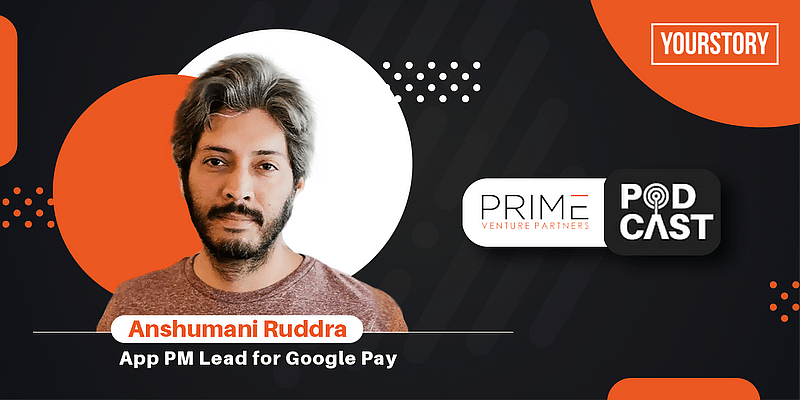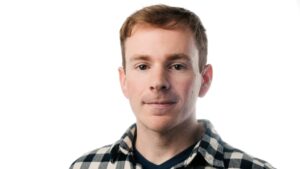Anshumani Ruddra, currently Group Product Manager at Google, started out as a game designer at Zynga India in 2010.
“So, I was the first game designer at Zynga India. I was a part of the core team, which originally set around building out Zynga India, the first studio of Zynga outside the US. We did phenomenally well and grew incredibly fast. I spent a lot of time in the US working with PMs (product managers) and designers there. And I think the product design bug bit me then,” says Anshumani Ruddra in a podcast with Amit Somani, Managing Partner, Prime Venture Partners.
From Zynga to Google
He continued this journey by running his own games studio, Tiny Mogul Games, which eventually got acquired by Hike.
“It became a sister company to Hike. That’s when I reached a decision point thinking that, ‘Okay, I’ve spent enough time in games. Let me see if I can take the lessons from…’ And at this point, I’d never held the product manager title officially,” he adds.
Anshumani had been a game designer and then a general manager or a studio head. But his thesis is that a whole bunch of learnings from the world of game design and can be applied to what he calls the “Roti, Kapda, Makaan” products.
“These are regular, everyday use products which millions of people use. So, I realised that education and healthcare were diametrically opposite to entertainment. So I went to Practo to see if that would make sense,” Anshumani says.
He spent time at Practo running the central product – both on the consumer side as well as for doctors. Then Anshumani went to his first love – education.
“I come from a family of educators, so education runs fairly deep in the family. So I went to CueMath to head the product there and built a team. They had a very different business model, and worked on a different scale. When you’re in the world of games, millions of users play your games. Here we are working on a B2B2C model with thousands of teachers teaching tens of thousands of students. It’s a very, very different model, with a very different scale, and a very different set of problems to be solved,” he says.
And after that, he worked at Hotstar, which is now Disney + Hotstar. “I was there for a very long time, led the sports, social and gaming vertical at Hotstar and was responsible for streaming of IPL and world cup and a bunch of other things. So Hotstar is the home for cricket in India. So, I did a bunch of that.”
Now, it’s been nine months since he has been working at Google. “Google is a generational company. Having spent so much time at startups, both early-stage, mid-stage and late-stage, Google Pay seemed like a startup within Google, which is how I ended up there,” he says.
Learnings
Talking about the learnings throughout his journey, Anshumani added that, “I feel like a lot of product-building requires this cross-pollination. What it requires is breadth more than depth in a lot of areas. To become a product builder or a successful product manager, you have to be able to work with other people.”
“Similarly, you may work like a machine, but if you don’t have the strategic depth or you don’t have tactical depth, you will struggle. So I think that as PMs, having all these three abilities is great,” he elaborated.
Talking about user insight in the tech product world, Anshumani says that there is no shortcut, and the only way to do this is to go and talk to potential or existing users.
“Go figure out how usage happens. When you go figure out why only 20 percent women are your users, you‘ll realise that it’s because only 20 percent of them own their own phones, and mostly, they still use their brother’s or their husband’s phone during the day.”
How to become a product manager
Speaking on why people needed a PM, he adds, “PM is somebody who used to get things done and who would run around engineers and designers and get things done. Now, we are looking at PMs becoming founders. We are looking at founders recognising that they need good PMs pretty early in the life cycle of their product, even at a very early stage. PMs have an inordinate impact on the product and its growth.”
Anshumani says there is no playbook for becoming a good PM. “Most people actually make that transition into product management while doing something else. A marketer moves into product management, or an engineer moves into product management, or a game designer like me moves into product management. But again, there is no path there to follow.”
To know more, listen to the podcast here.
Time stamps:
02:00 – Anshumani’s product journey from Zynga to Google
09:30 – Why you need both tactical and strategic depth
15:00 – How Indian users are ahead of Indian PMs and designers
24:00 – The golden age of product management
29:30 – How to think about your career as a PM
34:00 – The greatest growth hack to learn



![Read more about the article [Funding Galore] From Fi Money To FitterFly — $189 Mn Raised By Indian Startups This Week](https://blog.digitalsevaa.com/wp-content/uploads/2022/02/default-social-share-image-300x158.jpg)






